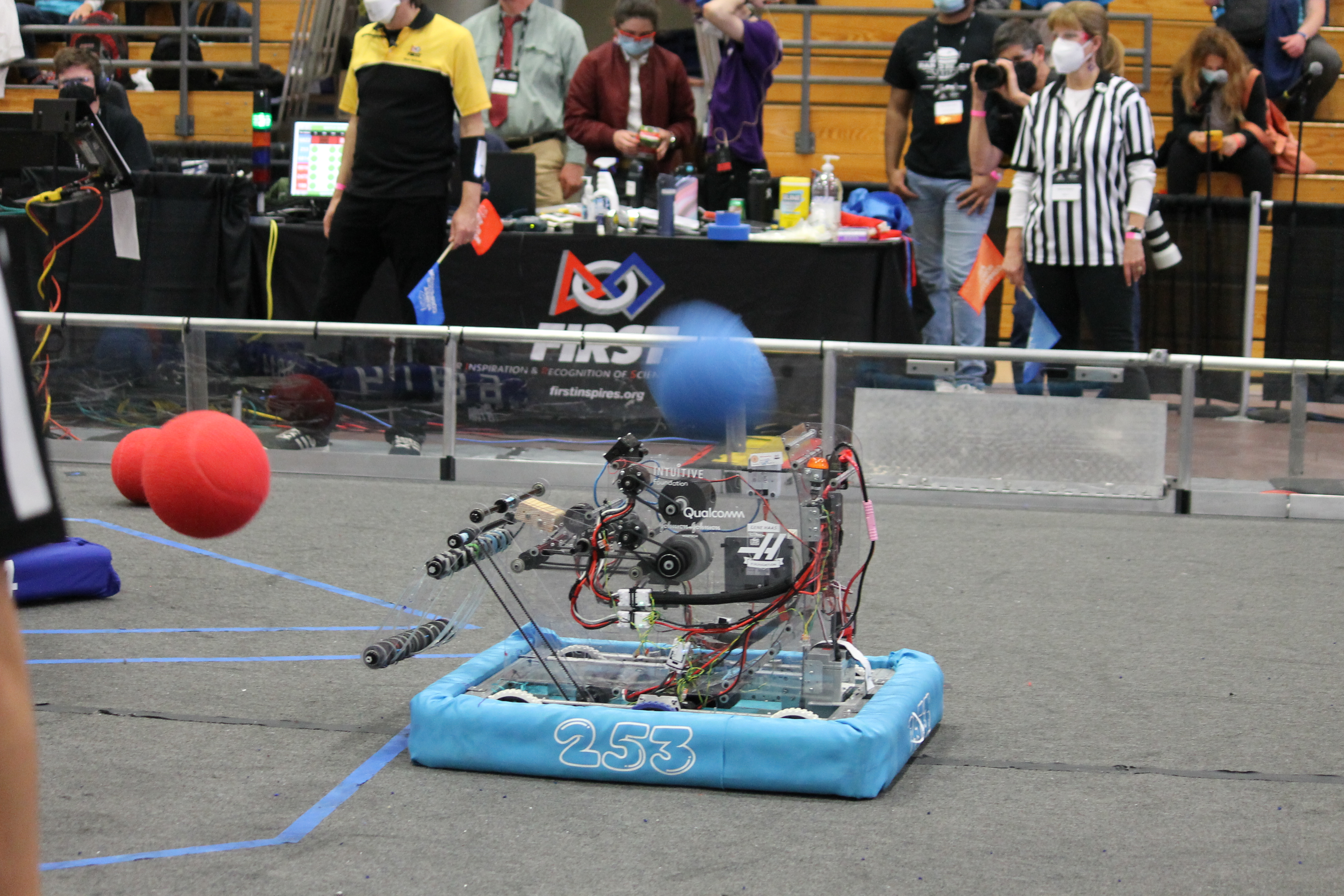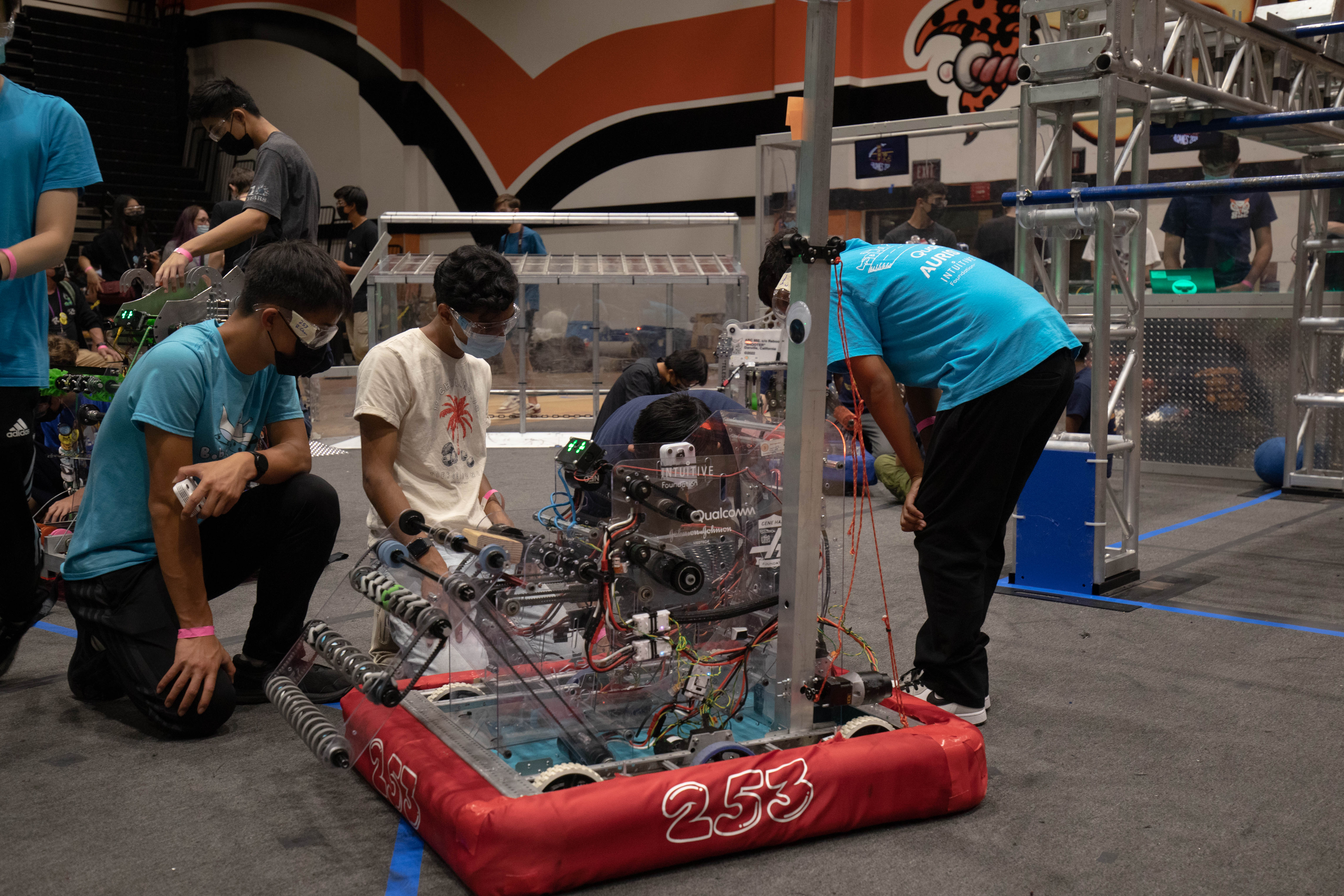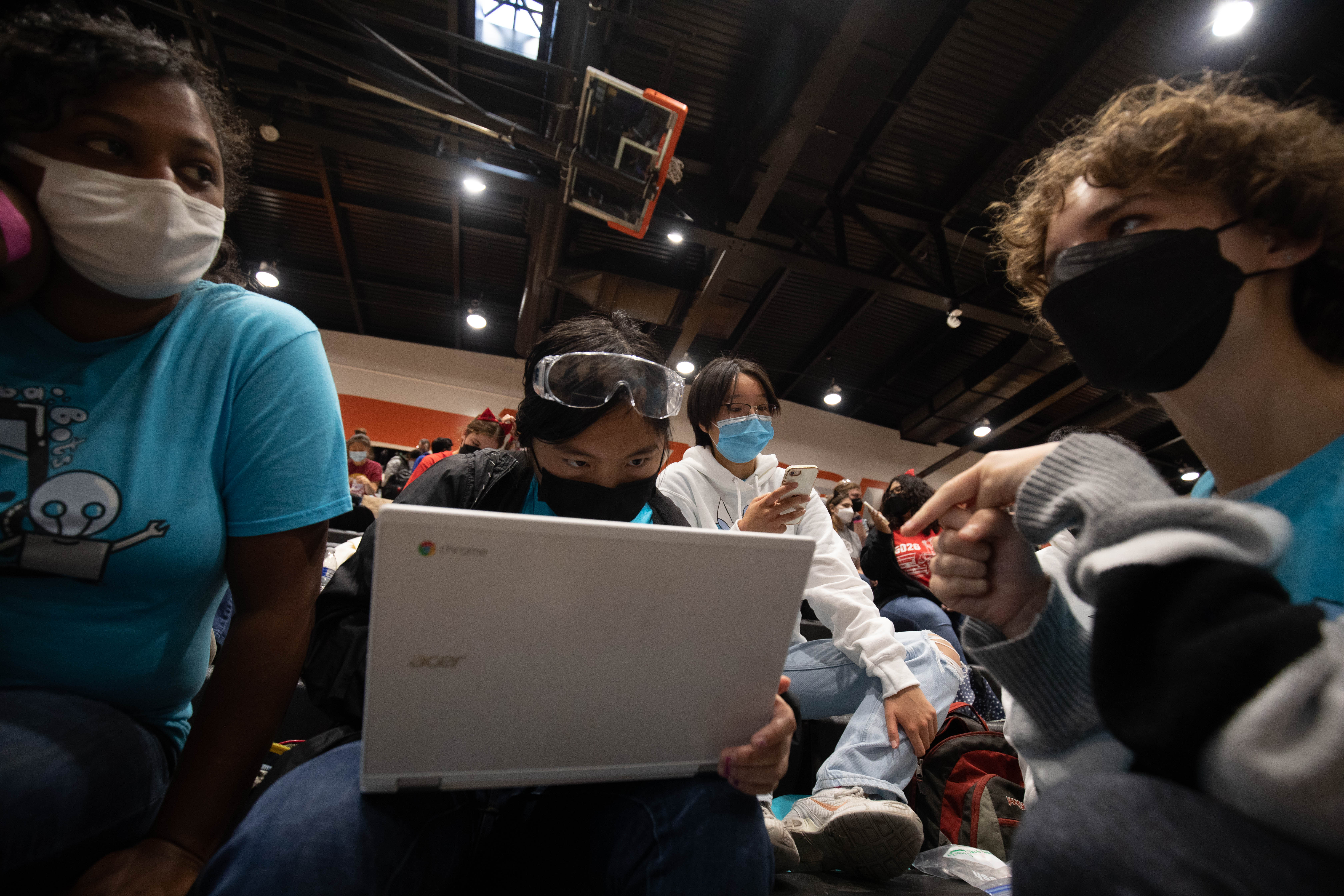Media¶
Photography is an art form. We use it day to day with social media platforms, capturing memories for over a century. Many people are starting to embrace photography to capture the moment, with many using their smartphones or GoPro's to record their own daily lives. For others, it's capturing a moment and posting it to show their friends. They don't need to learn how to use it, they just want it to work.
The Boba Bots have had a different media person over time, each one with their own talent and each one with their own unique creative-process. People aren't necessarily restricted, nor confined, to the conventions that are within the modern media landscape. Photography is simply a tool to help aid publicity, one of many tools that can be used to help create a team's image. This documentation page is an introduction to advancing your photo taking skills and abilities.
Understanding Your Camera¶
The basic understanding of your images can be best described by how you interact with your camera. Take for instance, your smartphone. It has a sensor, lenses that distort the image, and a place to store it.
Every camera, from the oldest surviving museum pieces to the most expensive on the market, have these three basic necessities. In layman's terms, anyone with no knowledge of a camera can operate it (like a Polaroid). But what changes from a "smartphone" image to a "professional" image is the person behind it and their understanding of how to use the other components of a camera.
Exposing An Image¶
Inside of a camera, three other components work together to create a "properly exposed image."
There is a shutter, an aperture, and a light-sensitive sensor (or film) that create a balanced and exposed image. To tell whether or not your image is properly exposed, there is a meter that tells whether or not the image will be under or overexposed.
WClarke and Samsara, CC BY-SA 4.0, via Wikimedia Commons
Tip
The Carmel Clay Public Library in Carmel, Indiana, has a digital resource guide that can help with your understanding of the camera. Their Digital Media Lab offers a Digital Photography Cheat Sheet, open to access for anyone.
Shutter Speed¶
Like how your eyelids cover your eyes, shutter speed is a set amount of time that light is being introduced to the sensor. In many cameras, shutter speed is defined by "1/x". This is the movement of a "door" that allows light to pass through to the sensor for a set amount of time.
For a better explanation, let's use film as a better example. Film is a very delicate material that is extremely sensitive to light. It absorbs light through a lens for the length of time the shutter is open and then is locked out. Brighter colors are absorbed quicker, while darker colors take a little longer. Because of these varying colors, the light creates an image with a lot of contrast. If exposed to light for a prolonged amount of time, the film may overexpose and any contrast originally set by the original opening of light is gone.
Shutter speed is a very important factor when considering what an image should look like. Shutter speed can make an image extremely blurry or still. At a FRC competition, people are moving a lot. A slow shutter speed can make your robot look like it's in a hurry, or just completely shaky and blurry. A fast shutter speed can make your robot still, or convey an actionless robot.
Tip
Use the Dima Exposure Triangle Simulator 3.0 to help aid your understanding of shutter speed. Notice how the ducks are blurry when you set a "slow" shutter speed and how the ducks are perfectly still when you set a "fast" shutter speed. This simulation is slightly overexagerated, as ducks do move faster than robots. (The exposure meter is located on the top right of the image.)

This image was taken with a slow shutter speed. Notice how the ball is "shooting out" and the ball isn't still in mid-air. The robot is stationary, which means that when the shutter was up, the robot wasn't moving.

This image was taken with a fast shutter speed. The subjects are still and no one has any "ghosting" artifacts on them.
Aperture¶
Aperture is the amount of light being brought in by a lens. A major component of portrait photography, aperture is mainly used to create background blur, or depth of field. Aperture is usually expressed in "f/x" and the smaller the number is the more open the blades are.
In many instances of event photography, aperture is not a necessary component to taking photos. A smaller aperture can help sharpen the photos, but it comes at a compromise of having to lower shutter speed or increase light sensitivity. (Light sensitivity, or ISO, is explained in the next section.)
Cbuckley, CC BY-SA 3.0, via Wikimedia Commons
Tip
For this section, use the Andersen Exposure Simulator to help aid your understanding of aperture.
ISO¶
The term ISO, which is an abbreviation of the International Organization for Standardization, is used in the photography world to define a film or sensor's sensitivity to light. The higher the sensitivity, the more "grain" or "noise" an image has.
Take for instance, a night-time photo. Under bright circumstances, an image can be exposed properly without the need to increase the sensitivity. But with a night-time photo, the physical limitations of a lens (aperture) and the limitations of a slow shutter speed require a third variable to change. This would be the ISO. By boosting the ISO, the shutter speed can keep a subject still or an image sharp. This comes at a cost though, as your image will begin to look grainier and details will begin to "smooth out" and deteriorate. When exposing an image, consider balancing out shutter speed and aperture first, before considering increasing your camera's sensitivity to light.
Tip
In the Andersen Exposure Simulator, setting it to manual and putting the ISO to the highest level will help explain the adverse effects of increasing the light sensitivity. Be sure to balance out the shutter speed and aperture to properly show an image.
Composition¶
Composition is very important. Comparisons between "amateur versus professionals" always depend on how one composes their image. One can have a great camera, but poor composition ruins it. Like buying a $2,000 computer, but using it for tetris.
Basic composition consists of the "rule of thirds" and balancing the image. Rule of thirds can be particularly useful in creating a balance in a photo, such as a close object versus a far object. It can create more interesting photos, compared to having an object in the center of an image. The rule of thirds can be applied in many artistic applications, not just photography.
Tadrart01.JPG: Pir6monderivative work: Teeks99, CC BY-SA 3.0, via Wikimedia Commons
Composition also consists of getting the angle right and finding the best position to take the photo. With the right blend of a lens, photos can take on different meanings. For example, the photo below was taken during CalGames 2022. The person in the middle is strategizing for the next match, whilst on the side the teacher mentor and another member are discussing strategy. This image was deliberately framed to feel intense, but if taken from their bleacher level the image wouldn't feel the same.

Equipment¶
Cameras are very expensive tools. The camera body should not be of concern, but the lenses are the most important. Camera bodies are capable of producing good images, but lenses are the ones creating sharp images. When creating this purchasing decision, the lens will always be the one that will help in the future.
Camera Body¶
The "big three" camera companies are:
-
Canon
-
Nikon
-
Sony
There are other companies that produce more "photo" or "video" orientated cameras as well. FujiFilm has great photo-based cameras, but they have yet to improve in video. Panasonic has great video-based cameras (with unrivaled stabilization), but it lacks decent photo-taking capabilities. Leica is expensive. Pentax is old.
When it comes to "DSLR vs Mirrorless'', mirrorless development will continue and DSLR production will inevitably stop. The idea of a resurgence of DSLR isn't entirely impossible, but the feel of an old DSLR stems from the 2000's.
Camera bodies also differ in sensor size, with full frame and APS-C. Full frame, or 35mm, is a form factor commonly used for photography due to its low light capabilities. APS-C is a smaller form factor that's common for nature and wildlife photography. Every camera manufacturer, except Canon, is a 1.5x crop compared to full frame. Canon has a 1.6x crop. This means that the focal length of a full frame lens changes by that specific amount. Full frame is very much ideal as it is the successor to 35mm film, with many lenses that were designed for the sensor size over the past century.
Lenses¶
Lenses can vary as each one has its own unique capabilities. When purchasing a lens, purchase one with the correct lens mount. Each lens also has its own field of view, with a wide lens having a wider field of view and telephoto lens having a tighter field of view. Camera lenses have differing perspectives, with a difference in wide and tele lenses. Understanding perspectives is very important when beginning portrait photography, but it is not as important in event photography.
Lenses differ in prices due to its sharpness and its "glass". Cheaper lenses are not as sharp, with chromatic aberration and softness on edges and corners. Lenses are the most important component to an image, as a cheap body and expensive lens produce better results than an expensive body and a cheap lens.
There are more important factors when it comes to purchasing the right camera and lens, such as framerate, megapixel count, and autofocus. With a decent framerate, moderate (20+) megapixel, and decent autofocus (Canon, Sony, or Nikon), deciding the right camera shouldn't be an issue. Full frame is ideal due to its low light capabilities, but prices for mirrorless full frame cameras are pricey. A decent standard zoom lens and a telephoto lens is also important, with 200mm max as a decent length for full frame.
Other Resources¶
With a valid SMCL (San Mateo County Libraries) card, LinkedIn Learning resources are available for anyone to access. There are a variety of courses that can teach photography, videography, as well as advancing management skills and more. Treat these courses are visual guides to help aid your understanding of photography or videography, it is better to practice photography than watch it.
Courses recommended are:
- Introduction to Photography - Ben Long
- Photography 101 - Joseph Linaschke
If you would like to access LinkedIn Learning, go to https://www.linkedin.com/learning-login/go/smcl.
Adobe, Nikon and B&H also cover the topics above, albeit with a bias to sell camera equipment and products.


